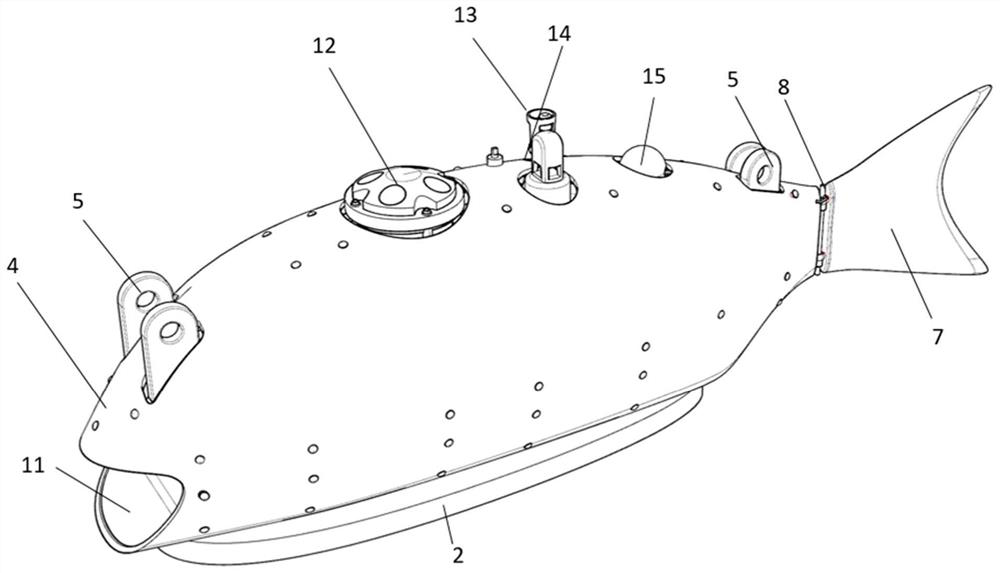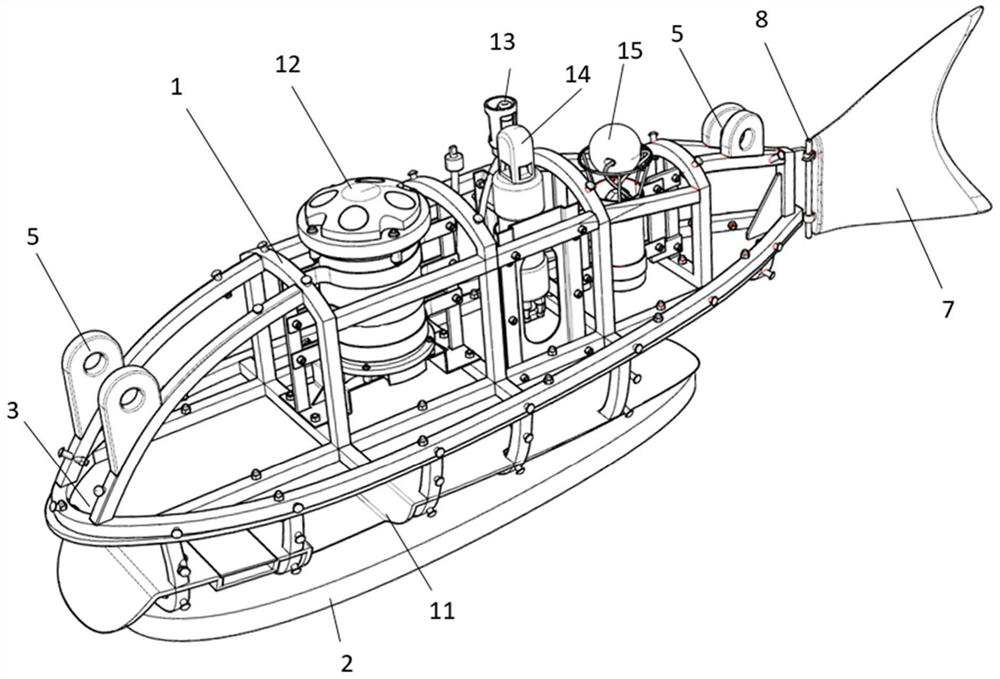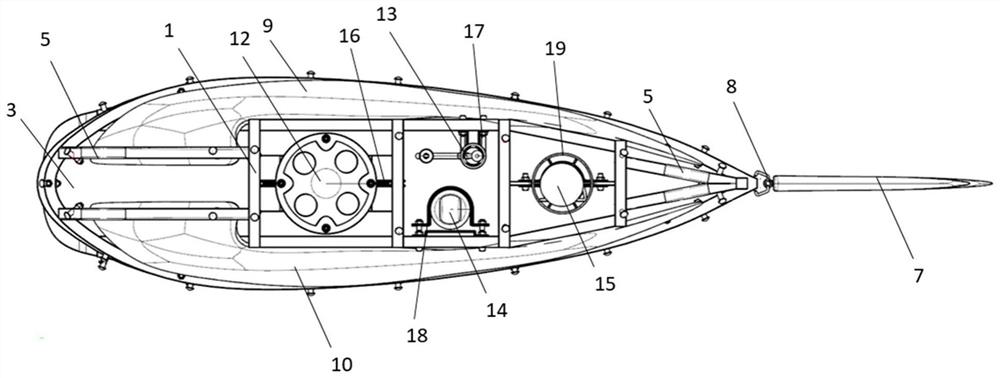Bionic river sitting bottom for hydrological sediment monitoring
A sediment and bionic technology, applied in reservoirs, coastal areas, lakes, and rivers, can solve the problems of easy signal loss, low sampling efficiency, and on-site manual labor, so as to avoid inaccurate monitoring data, broad application prospects, and prevent side effects. pouring effect
- Summary
- Abstract
- Description
- Claims
- Application Information
AI Technical Summary
Problems solved by technology
Method used
Image
Examples
Embodiment 1
[0046] This embodiment provides a bionic river bottom for hydrological sediment monitoring, the structure is as follows Figure 1-12 As shown, it includes a bionic fish frame 1, a bionic fish shell shell 4, a middle partition 3, a movable fish tail 7, a left cavity 10, a right cavity 9, a sediment collecting and stabilizing plate 11, a first monitoring equipment fixture 16, a second Two monitoring equipment fixtures 17, the third monitoring equipment fixture 18, the fourth monitoring equipment fixture 19 and the heavy base plate 2;
[0047] The bionic fish frame 1 is composed of a shuttle-shaped middle frame, several horizontal bars, several U-shaped frame bars, several connecting bars and two arc-shaped frame bars, and the several horizontal frame bars are arranged horizontally and vertically in the shuttle-shaped middle frame and Fixedly connected with the shuttle-shaped middle frame to form a shuttle-shaped frame plane, the several U-shaped frame bars are respectively erect...
Embodiment 2
[0056] This embodiment provides a bionic monitoring device for hydrological sediment monitoring, which is composed of the bionic river bottom of embodiment 1 and hydrological monitoring equipment, and the hydrological monitoring equipment is Acoustic Doppler Velocity Profiler (ADCP) 12 , Optical backscattering self-contained turbidity meter 13, LISST-200X water body on-site laser particle size measuring instrument 14, LRT light releaser 15. Acoustic Doppler Velocity Profiler (ADCP) 12 utilizes screw nut to be installed on the bionic fish frame 1 by Acoustic Doppler Velocity Profiler (ADCP) fixture 16 and Acoustic Doppler Velocity Profiler (ADCP) spacer 20. Optical backscatter self-contained turbidimeter 13 utilizes screw nut to be installed on the bionic fish frame 1 by optical backscatter self-contained turbidimeter fixing fixture 17. The LISST-200X water body on-site laser particle size measuring instrument 14 is installed on the bionic fish frame 1 through the LISST-200X wa...
PUM
 Login to View More
Login to View More Abstract
Description
Claims
Application Information
 Login to View More
Login to View More - R&D
- Intellectual Property
- Life Sciences
- Materials
- Tech Scout
- Unparalleled Data Quality
- Higher Quality Content
- 60% Fewer Hallucinations
Browse by: Latest US Patents, China's latest patents, Technical Efficacy Thesaurus, Application Domain, Technology Topic, Popular Technical Reports.
© 2025 PatSnap. All rights reserved.Legal|Privacy policy|Modern Slavery Act Transparency Statement|Sitemap|About US| Contact US: help@patsnap.com



